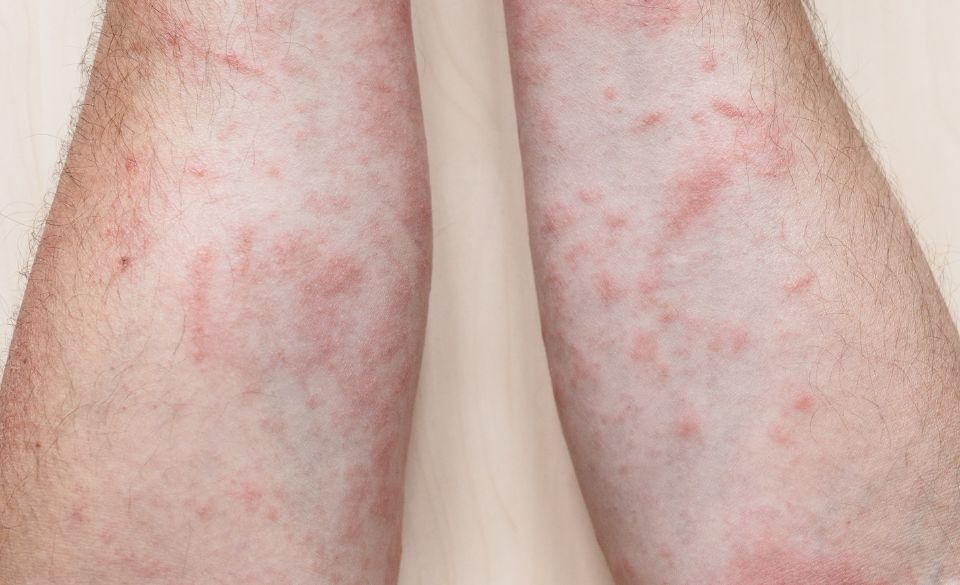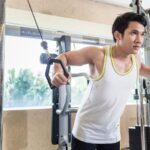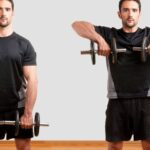
Exercise-Induced Vasculitis: Symptoms & Treatment Options
Page Contents
- 1. Nutrition: Exercise-Induced Vasculitis, Symptoms & Treatment Options
- 2. Diagnosis: Understanding the Risk Factors of Exercise-Induced Vasculitis & Knowing When to Seek Treatment
- 3. Treatment: Knowing What to do When Diagnosed With Exercise-Induced Vasculitis
- 4. Post-Treatment Care: Know the Best Practices For Exercise-Induced Vasculitis
- 5. Prevention: Reduce the Risk of Exercise-Induced Vasculitis
- 6. Mental Health: Exercise-Induced Vasculitis, Coping Mechanisms & Self-Care
- 7. Support: Find the Help You Need for an Improved Quality of Life
Exercise-induced vasculitis (EIV) is a rare condition that arises when the body’s blood vessels become inflamed. Although the condition is typically mild and benign, understanding the risks posed by EIV is essential for leading a healthy, active lifestyle. Symptoms of EIV are often subtle, and may not be noticed until severe damage has already set in. Fortunately, with modern diagnostic tools and early intervention, effective treatment is possible.
Patients with EIV experience an increase of inflammation throughout their body; this occurs when the body detects that the vessels supplying oxygenated blood are under stress. As the body releases signaling molecules to awkwardly navigate the compromised vessels, harmful chemicals accumulate and cause inflammation in other areas throughout the body. Over time, this will weaken the immune system and potentially cause long-term, irreparable harm.
EIV primarily affects the muscles and the largest blood vessels in the body, the veins and arteries. Symptoms range from a mild sensation of heat or warmth to an intense burning sensation throughout the body or the affected region. Other signs of EIV include swelling, redness, or swelling of the skin encompassing the hot area. In severe cases, the affected region may turn an abnormal color or become extremely painful.
Although the symptoms of EIV can be quite severe, some simple measures may help prevent and alert patients to the condition before symptoms become too severe. Proper warm-up before strenuous activity can help reduce the risk of inflammation. Additionally, recognizing the signs of temperature change in the body is key to understanding EIV; the body’s normal temperature should typically remain between 98.6°F and 99.1°F. Additionally, persons who consistently experience strenuous activities should receive regular check-ups.
If a person recognizes the signs of EIV, they should visit a doctor and receive coaching on their body’s reaction to exercise. Treatment options vary depending on the severity of the condition, but might include simple measures like improving technique and stretching properly before exercise. In more severe cases, doctors might prescribe corticosteroids to reduce swelling or antibiotics to fight infection. Physical therapists may provide exercises to help reduce inflammation and strenuous activities should usually be avoided.
EIV can be a difficult condition to navigate, as signs and symptoms are often mild and hard to detect. However, modern treatments are available to help patients manage the condition. As with any medical condition, consulting a qualified professional is essential. By doing so, patients understand their individual risks and are equipped to take control of their health. It is important to be mindful of the body’s response to exercise and look out for any signs of temperature change or inflammation. Taking the necessary precautions and steps can help prevent potential damage and allow patients to continue an active, pain-free lifestyle.
1. Nutrition: Exercise-Induced Vasculitis, Symptoms & Treatment Options
Exercising regularly and maintaining a balanced diet are essential for healthy living. However, there is a condition known as Exercise-induced vasculitis (EIV) which can occur when the body’s blood vessels become inflamed due to strenuous physical activities. Though this condition is often mild and benign, understanding the risks posed by EIV is essential. Patients should be aware of the symptoms of EIV, which can range from mildly feeling a warm sensation to a more intense burning sensation throughout the body or affected area. Additionally, swelling, redness, or swelling around the affected area can also be indications of EIV. Taking the necessary precautions and steps can help prevent potential damage and allow patients to continue living an active, pain-free lifestyle.
2. Diagnosis: Understanding the Risk Factors of Exercise-Induced Vasculitis & Knowing When to Seek Treatment
When it comes to Exercise-Induced Vasculitis, early detection is key. Unfortunately, with mild cases, symptoms often fly under the radar until damage has already been done. Those who participate in vigorous physical activities or workout regularly are most at risk of experiencing EIV. To minimize the chances of suffering from EIV, proper warm-up and stretching before physical activity can help reduce the risk. Additionally, regular check-ups are also essential for those who are prone to strenuous activities. This can help detect any potential health issues early and allow the individual to take action to prevent long-term damage.
3. Treatment: Knowing What to do When Diagnosed With Exercise-Induced Vasculitis
Upon diagnosis, an individual should be equipped with knowledge on their body’s reaction to exercise. Treatment options vary depending on the severity of the situation, but doctors may recommend simple measures such as proper warm-up and stretching before physical activity. In severe cases, corticosteroids may be prescribed to reduce swelling or antibiotics to fight infection. Physical therapists may also be consulted to provide exercises to help reduce inflammation and avoid strenuous activities. With the right approach and treatment plan, individuals can gain control over their condition and lead healthy, pain-free lives.
4. Post-Treatment Care: Know the Best Practices For Exercise-Induced Vasculitis
It is essential that those suffering from EIV be aware of the potential side-effects and how they can manage their condition. This includes avoiding strenuous activities; if the individual does partake in physical exercise, they should start off slow and gradually work their way up. Doctors may also recommend enrolling in physical therapy to help strengthen the muscles in areas particularly affected by EIV. Additionally, patients should pay attention to signals that their body gives off in order to spot a potential flare-up and practice the necessary intervention.
5. Prevention: Reduce the Risk of Exercise-Induced Vasculitis
The best way to combat EIV is prevention. Widening a daily routine to include both cardio and strength training can reduce the odds of suffering from the condition. Additionally, wearing the appropriate clothing to physical activities and staying hydrated can also help individuals avoid developing EIV. Lastly, those prone to the condition should practice mindfulness when it comes to physical exercise, being aware of their body’s reaction to activity and trusting their instincts when it comes to rest and recovery.
6. Mental Health: Exercise-Induced Vasculitis, Coping Mechanisms & Self-Care
It’s important to take into account the potential psychological toll brought on by EIV. Body image and self-esteem are particularly vulnerable when it comes to chronic illness, as pain and physical limitations can often lead to negative self-talk. To combat this, it is important to focus on the body’s abilities rather than its limitations. Practicing mindfulness, staying physically active, and taking time for hobbies can all help individuals suffering from EIV cope. Additionally, positive self-talk and focusing on wellness goals can help provide the necessary morale boost to keep going.
7. Support: Find the Help You Need for an Improved Quality of Life
Receiving the necessary help and support is key to managing EIV. Talking about how we feel is powerful and can provide a much-needed sense of relief. Asking for help is a sign of strength and courage, as accepting assistance can help find ways to cope with EIV and virtually any medical condition in order to live a full and meaningful life. Additionally, seeking a support group or therapist can help deal with the emotional distress of living with a chronic illness, as well as providing tips and advice when it comes to day-to-day living.




